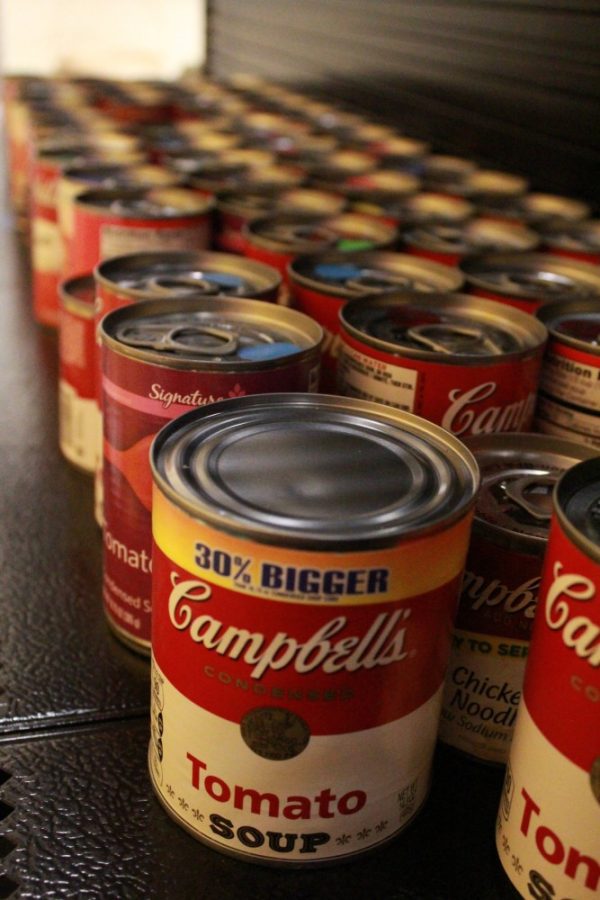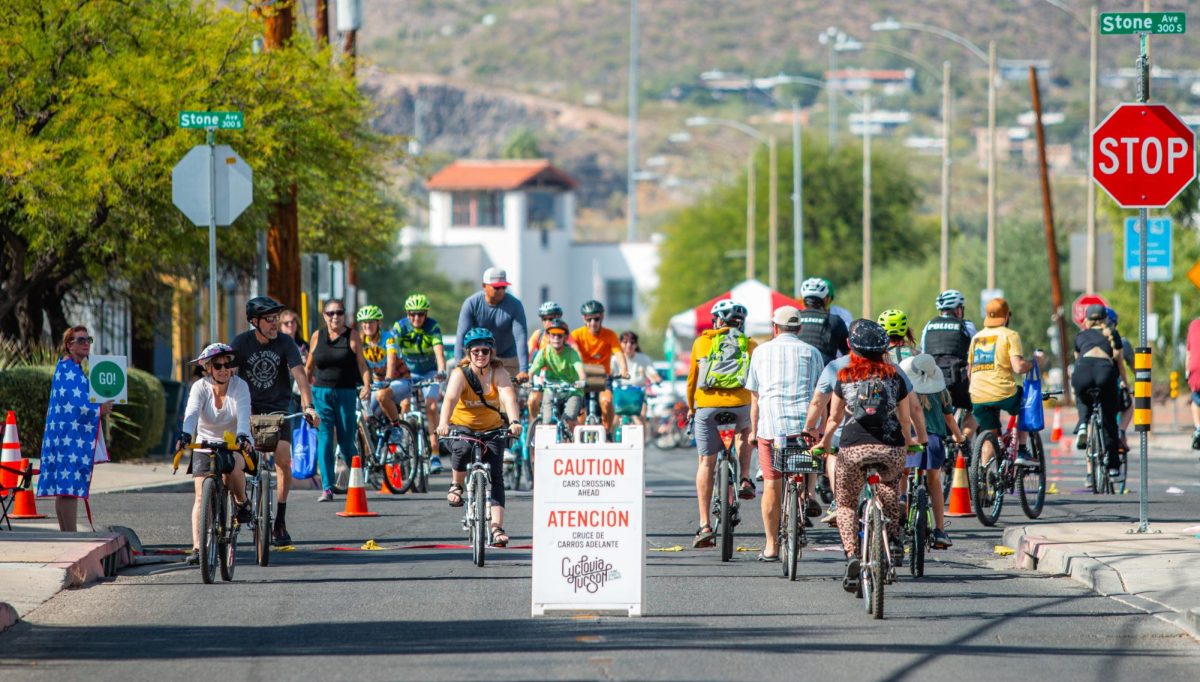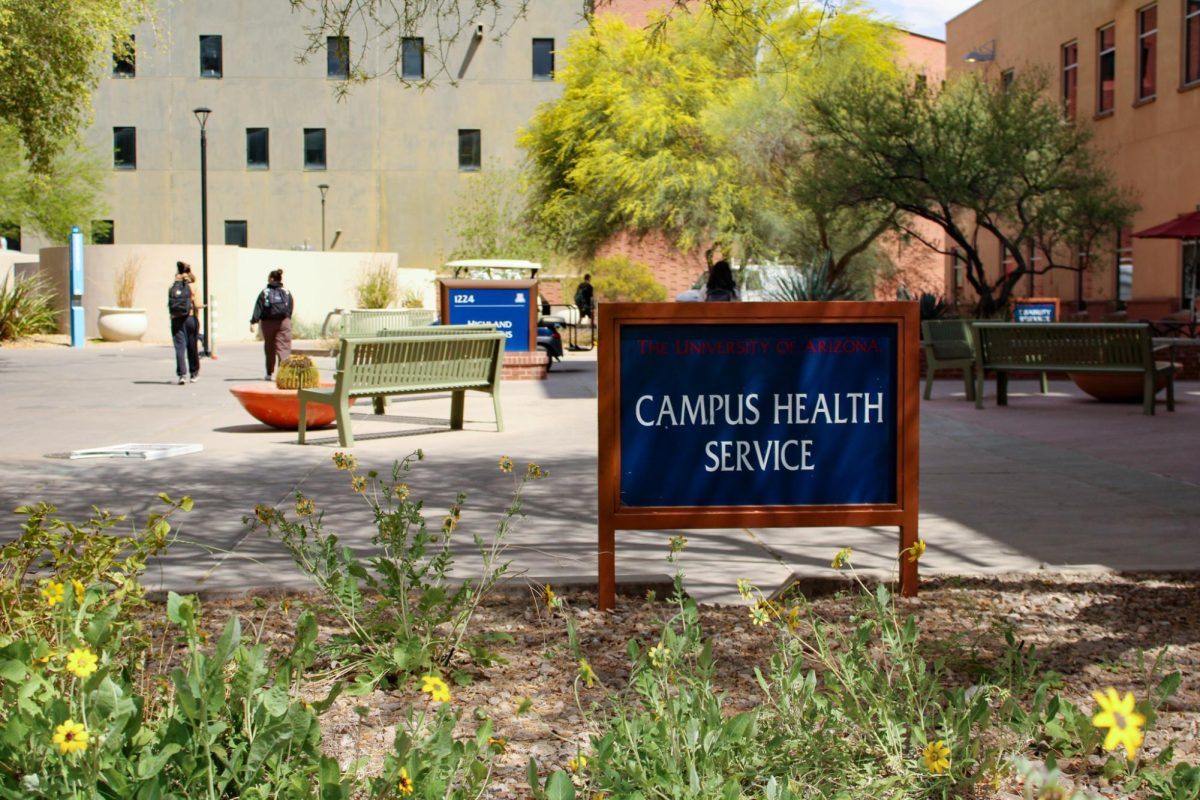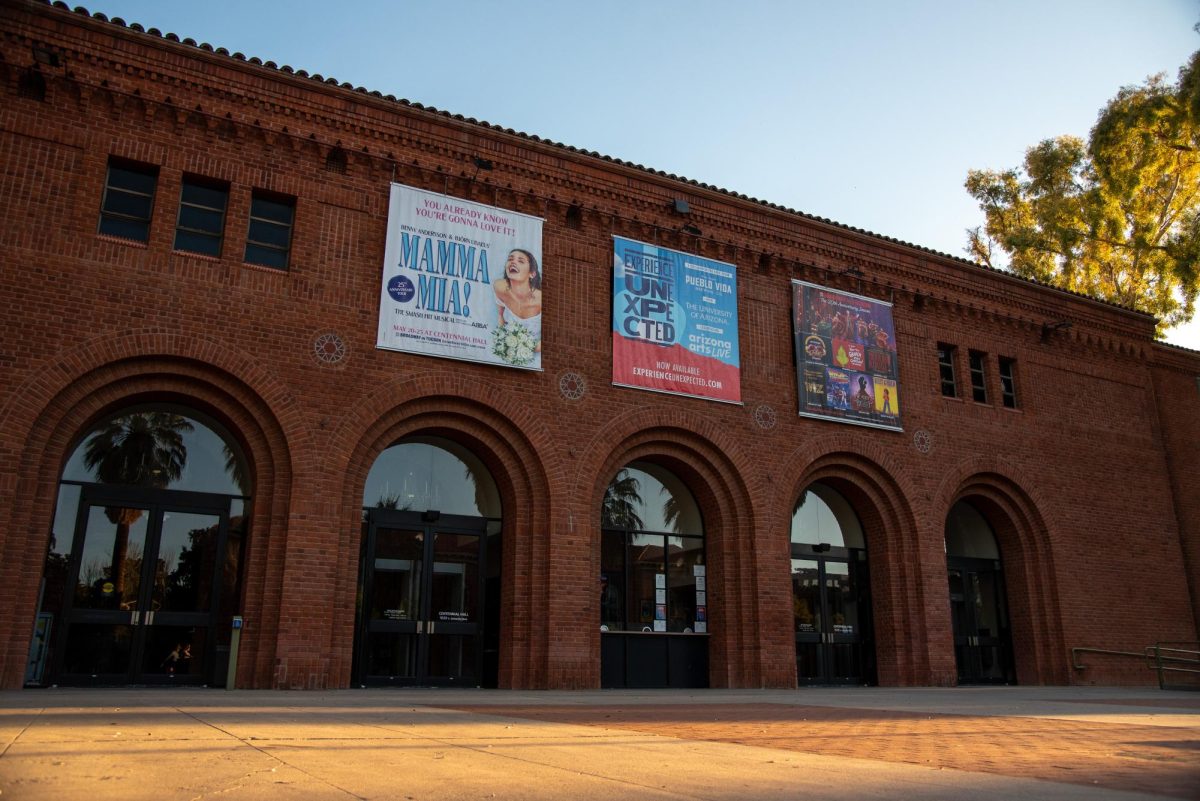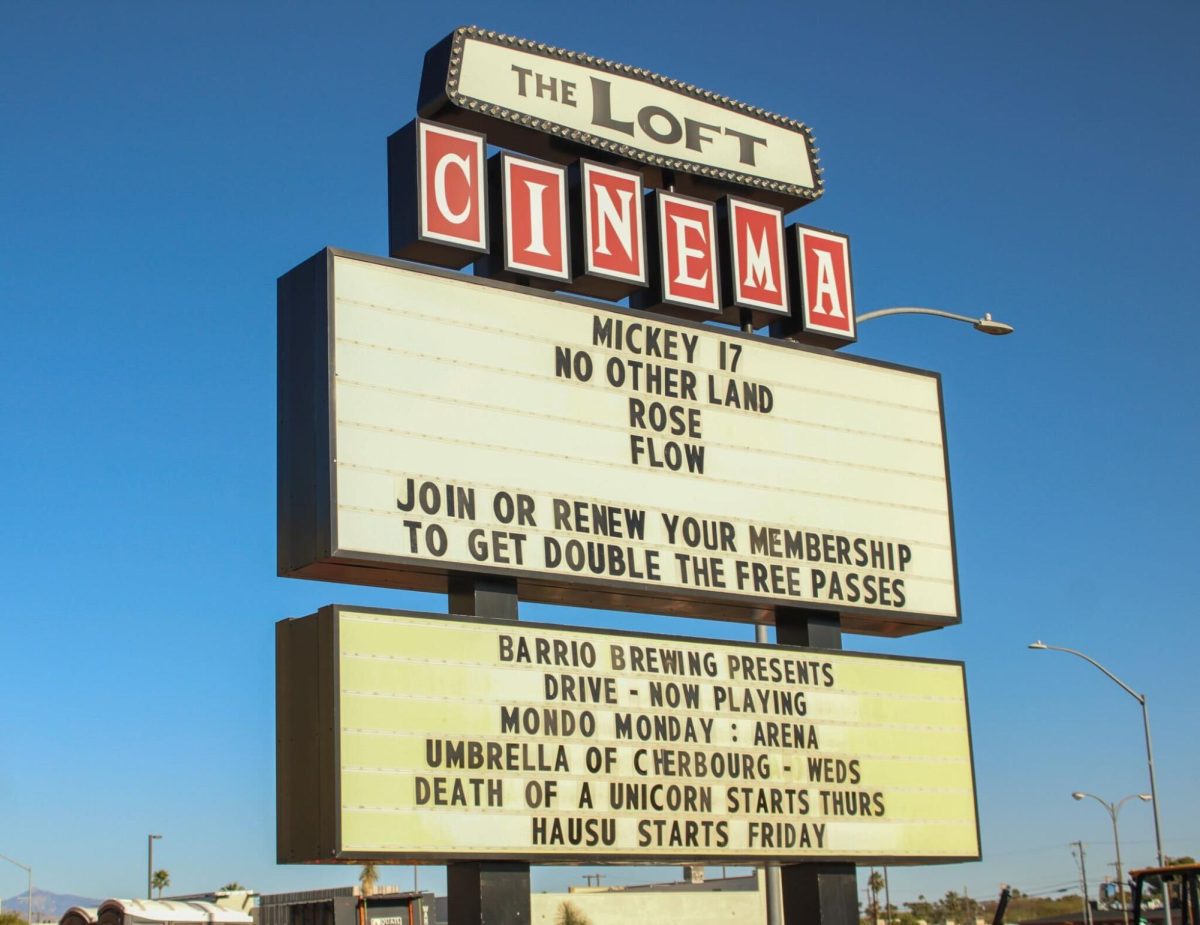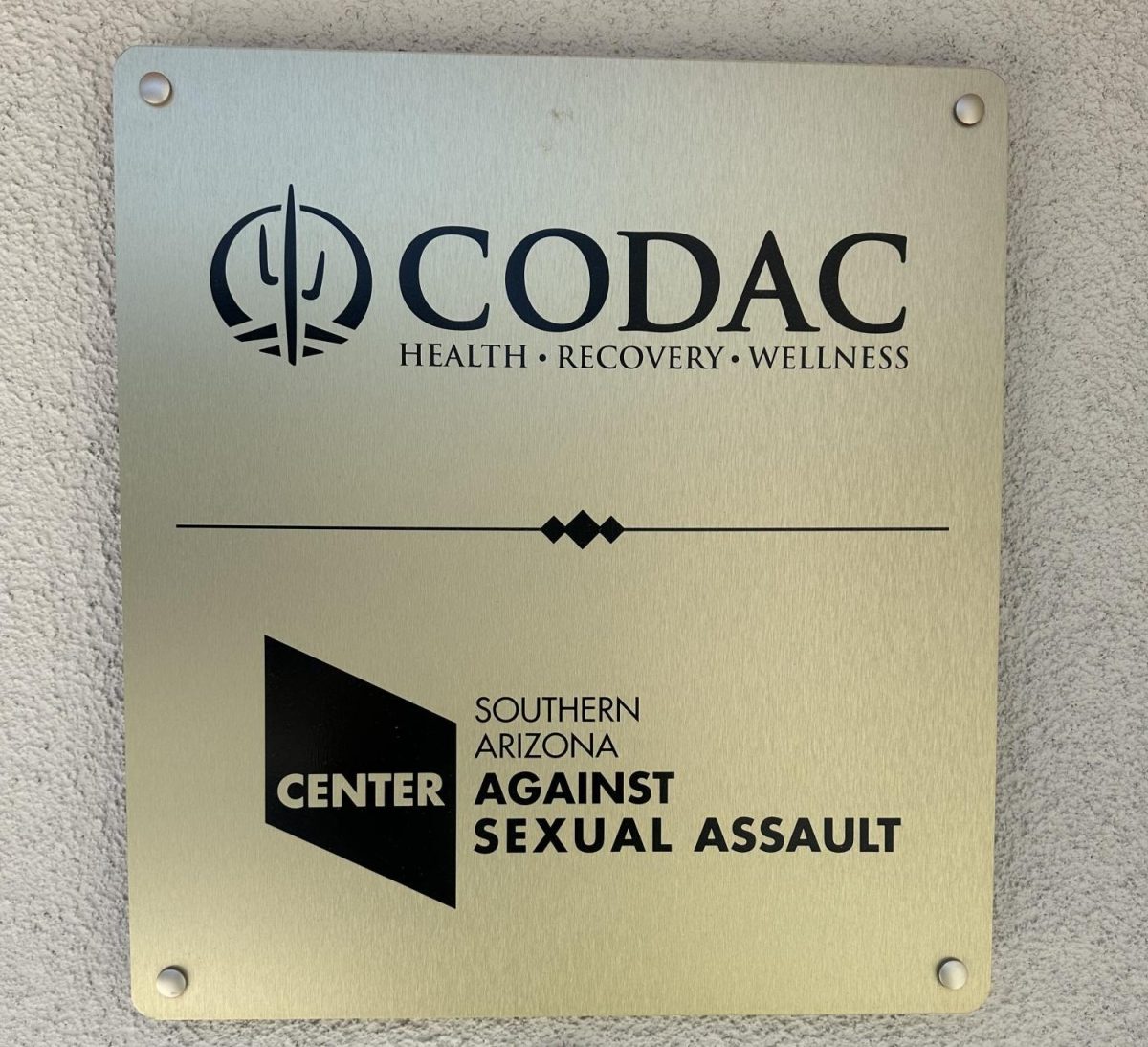According to data collected by University of Arizona students during the fall 2020 semester, the percent of UA students experiencing low food insecurity increased from 17.25% to 25.29% during the COVID-19 pandemic. Worrying about meeting their own dietary needs can take attention away from academic responsibilities, which can negatively affect their performance in college. Students shouldn’t have to sacrifice their academics in order to meet their dietary needs. What resources are available for members of the university community to fulfill their nutritional needs?
The Wildcat sat down with Bridgette Nobbe, coordinator of Campus Pantry and Campus Closet, to learn more about Campus Pantry and the vital role it plays in combating food insecurity on campus.
This article is the first in a series of three profiling the University of Arizona’s Campus Pantry. It answers basic questions about the pantry, like: “what is it,” “how does it work,” and “where is it located?”
The Basics
What is Campus Pantry?
Campus Pantry is a supplemental grocery program for the entire University of Arizona community designed to reduce food insecurity in the university community by offering food at no cost at weekly distribution events on campus.
What is food insecurity?
Food insecurity is defined by the United States Department of Agriculture as “the limited or uncertain availability of nutritionally adequate and safe foods, or limited or uncertain ability to acquire acceptable foods in socially acceptable ways.”
In the highest level of food security, an individual doesn’t experience any problems or anxiety about consistently accessing adequate food. Those who experience the lowest level of food security have their eating patterns disrupted or food intake reduced due to lack of funds or resources.
Students enrolled in a fall 2020 course co-taught by departments of agricultural & resource economics and nutritional sciences assistant professors Na Zuo and Patricia Sparks collected survey data from a random sample of 597 UA students.
They found that from March 2020 to November 2020, the percentage of students at the highest level of food security decreased from 75.88% to 59.46%. The percentage of students experiencing the lowest level of food security increased from 6.87% to 15.24%.
RELATED: Food insecurity among UA students doubled during the pandemic
Who uses the pantry?
All kinds of Wildcats use Campus Pantry, including students, faculty and staff. Nobbe said that although the majority of users are students, the number of unique staff users doubled during the COVID-19 pandemic, from 154 in fall 2019 to 314 during the spring 2020 semester.
“When I say staff, it’s not necessarily student professional staff that we think of on campus,” Nobbe said. “It’s a lot of the kitchen staff, the janitorial staff, [facilities management], maintenance” and other university staff.
A total of 2,764 unique members of the University of Arizona community came to the Campus Pantry at least once in Fall 2019 or Spring 2020. Individuals experiencing any level of food security may use the pantry.
How does food distribution work?
Campus Pantry operates on a client choice model. This means that visitors get to choose what food they receive.
“It’s essentially like half food bank, half grocery store: food bank in that it’s free but items are limited, and grocery store in that you get to pick what you want,” Nobbe said.
The amount of food you can take home is limited by a points system. Each food item is valued at a certain amount of points ranging from 0-1. Each distribution, visitors can take home five points worth of food.
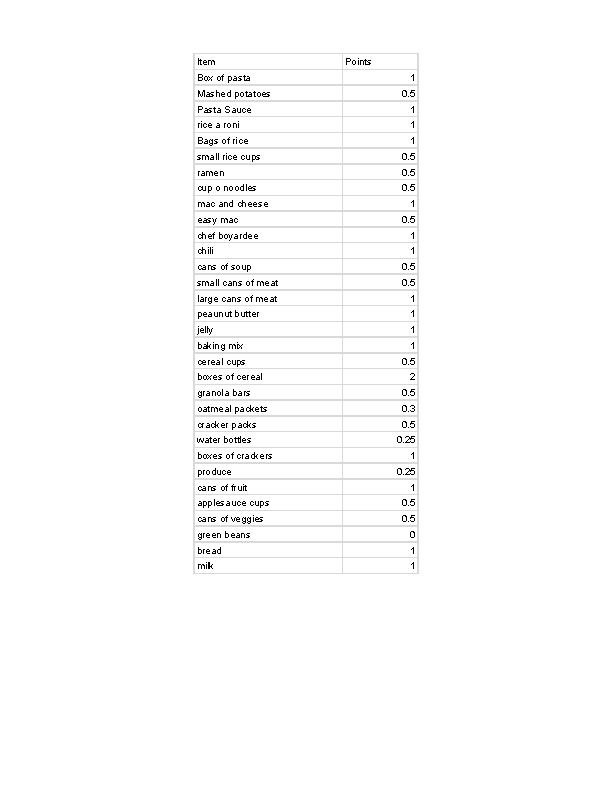
“Points are like an arbitrary amount of how much everything is worth,” Nobbe explained. “Things like milk, eggs and bread would all be one point; but, an apple is a lot less food if you think about it, so that would be 0.25, or think of it as four for one [point].”
Why does the pantry operate on the client choice model?
One of the advantages of the client-choice model is that it is flexible: visitors get to decide what their food assistance looks like, which reflects the diversity of needs in the community. Another benefit of the client choice model is that it expands the options available to visitors with certain allergies or other food sensitivities.
“Food insecurity looks different for everybody and access looks different for everybody,” Nobbe said. “We always think it’s financial–and it is financial, but it’s not always financial. Sometimes it’s transportation. Sometimes it’s just nutritious food, where you have some money for food, but what are you spending it on? If you’re going to be buying bananas, eggs and milk and those types of things, it’s going to be a lot more expensive than if you’re buying bags of chips and popcorn and those types of things.”
Where is the pantry located?
The pantry is located in the Sonora Room, on the first level of the Student Union Memorial Center. It is housed in the same space as Campus Closet, a student-run non profit organization that collects and distributes business and other professional clothing to students who can’t afford it.
RELATED: Campus Closet is back
When are food distributions?
During the 2021 summer semester, Campus Pantry is open Tuesdays and Wednesday from 12 p.m. to 2 p.m. The hours are subject to change each semester, so keep an eye on changes to the schedule by checking campus pantry’s website at https://campuspantry.arizona.edu/.
Throughout the 2019-2020 school year, the pantry held 92 food distributions. In the fall 2019 semester alone, it provided over 80,938 pounds of food to Wildcats in need.
Editor’s Note: This piece was produced as part of the “Confronting Scarcity Project” – a collection of reporting, commentary, maps, audio and more aimed at destigmatizing and amplifying the conversation around food and basic needs insecurity. This project was produced with students and the university community in mind as part of a collaboration between the Daily Wildcat and the UA School of Journalism’s student media apprenticeship program.
Follow the Daily Wildcat on Twitter



